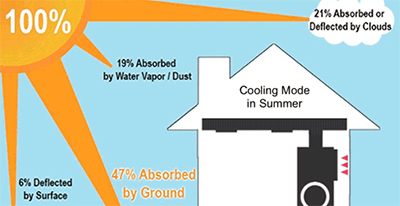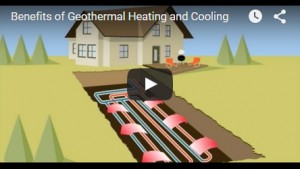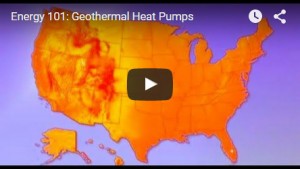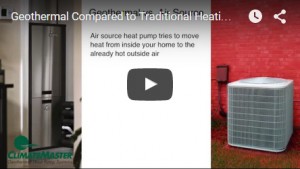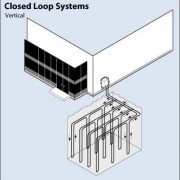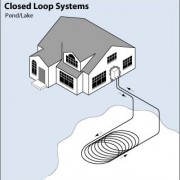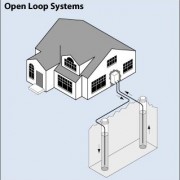Geothermal solutions use the constant temperature found just below the ground’s surface to supply heat pumps with an energy source for heating or cooling.
Learn How Geothermal Systems Work
To learn about how Geothermal Systems work we invite you to watch these three videos:
Modine
Whether it’s water-to-water, water-to-air, or split systems, Modine’s geothermal energy heat pumps are one of the most eco-friendly ways to heat and cool your home of business.
Hydron Module
Hydron Module’s highly efficient geothermal systems provide homes and businesses reliable and quiet operating, year-round comfort.
ClimateMaster
ClimateMaster is the world’s largest manufacturer of residential ENERGY STAR® qualified geothermal heat pump heating and cooling systems.
Tax Credits & Financing
The costs for residential geothermal systems typically range from $7,000 to $13,000 per heating ton, depending on the site and project type. However, MassCEC, state, and federal incentives can significantly reduce these upfront costs, making a geothermal heat pump a sound investment.
Types of Geothermal Heat Pump Systems
There are four basic types of ground loop systems. Three of these — horizontal, vertical, and pond/lake — are closed-loop systems. The fourth type of system is the open-loop option. Which one of these is best depends on the climate, soil conditions, available land, and local installation costs at the site. All of these approaches can be used for residential and commercial building applications.
Closed-Loop Systems
Most closed-loop geothermal heat pumps circulate an antifreeze solution through a closed loop — usually made of plastic tubing — that is buried in the ground or submerged in water. A heat exchanger transfers heat between the refrigerant in the heat pump and the antifreeze solution in the closed loop. The loop can be in a horizontal, vertical, or pond/lake configuration.
One variant of this approach, called direct exchange, does not use a heat exchanger and instead pumps the refrigerant through copper tubing that is buried in the ground in a horizontal or vertical configuration. Direct exchange systems require a larger compressor and work best in moist soils (sometimes requiring additional irrigation to keep the soil moist), but you should avoid installing in soils corrosive to the copper tubing. Because these systems circulate refrigerant through the ground, local environmental regulations may prohibit their use in some locations.
Closed Loop | Vertical
Large commercial buildings and schools often use vertical systems because the land area required for horizontal loops would be prohibitive. Vertical loops are also used where the soil is too shallow for trenching, and they minimize the disturbance to existing landscaping. For a vertical system, holes (approximately four inches in diameter) are drilled about 20 feet apart and 100 to 400 feet deep. Into these holes go two pipes that are connected at the bottom with a U-bend to form a loop. The vertical loops are connected with horizontal pipe (i.e., manifold), placed in trenches, and connected to the heat pump in the building.
Closed Loop | Horizontal
This type of installation is generally most cost-effective for residential installations, particularly for new construction where sufficient land is available. It requires trenches at least four feet deep. The most common layouts either use two pipes, one buried at six feet, and the other at four feet, or two pipes placed side-by-side at five feet in the ground in a two-foot wide trench. The Slinky™ method of looping pipe allows more pipe in a shorter trench, which cuts down on installation costs and makes horizontal installation possible in areas it would not be with conventional horizontal applications.
Closed Loop | Pond/Lake
If the site has an adequate water body, this may be the lowest cost option. A supply line pipe is run underground from the building to the water and coiled into circles at least eight feet under the surface to prevent freezing. The coils should only be placed in a water source that meets minimum volume, depth, and quality criteria.
Open-Loop System
This type of system uses well or surface body water as the heat exchange fluid that circulates directly through the GHP system. Once it has circulated through the system, the water returns to the ground through the well, a recharge well, or surface discharge. This option is obviously practical only where there is an adequate supply of relatively clean water, and all local codes and regulations regarding groundwater discharge are met.
US Department Of Energy
The US Department of Energy has singled out heat pumps as one of the most efficient forms of electric heating in moderate climates due to their ability to generate up to three times more heat than the energy they consume. Geothermal heat pumps, however, are not limited to moderate climates since they utilize the constant temperature of the earth to power heating, cooling and hot water systems. Heat pumps collect the heat inside a house and pump it outside to function as central air conditioners. Plus, they can use the excess energy produced in the HVAC process to generate hot water for domestic use. Using heat pumps to improve energy efficiency can also significantly reduce household electric bills.
Geothermal heat pumps (GHPs), sometimes referred to as GeoExchange, earth-coupled, ground-source, or water-source heat pumps, have been in use since the late 1940s. They use the constant temperature of the earth as the exchange medium instead of the outside air temperature. This allows the system to reach fairly high efficiencies (300% to 600%) on the coldest winter nights, compared to 175% to 250% for air-source heat pumps on cool days.
Although many parts of the country experience seasonal temperature extremes — from scorching heat in the summer to sub-zero cold in the winter—a few feet below the earth’s surface the ground remains at a relatively constant temperature. Depending on latitude, ground temperatures range from 45°F (7°C) to 75°F (21°C). Like a cave, this ground temperature is warmer than the air above it during the winter and cooler than the air in the summer. The GHP takes advantage of this by exchanging heat with the earth through a ground heat exchanger.
As with any heat pump, geothermal and water-source heat pumps are able to heat, cool, and, if so equipped, supply the house with hot water. Some models of geothermal systems are available with two-speed compressors and variable fans for more comfort and energy savings. Relative to air-source heat pumps, they are quieter, last longer, need little maintenance, and do not depend on the temperature of the outside air.
Even though the installation price of a geothermal system can be several times that of an air-source system of the same heating and cooling capacity, the additional costs are returned to you in energy savings in 5 to 10 years. System life is estimated at 25 years for the inside components and 50+ years for the ground loop. There are approximately 50,000 geothermal heat pumps installed in the United States each year.


